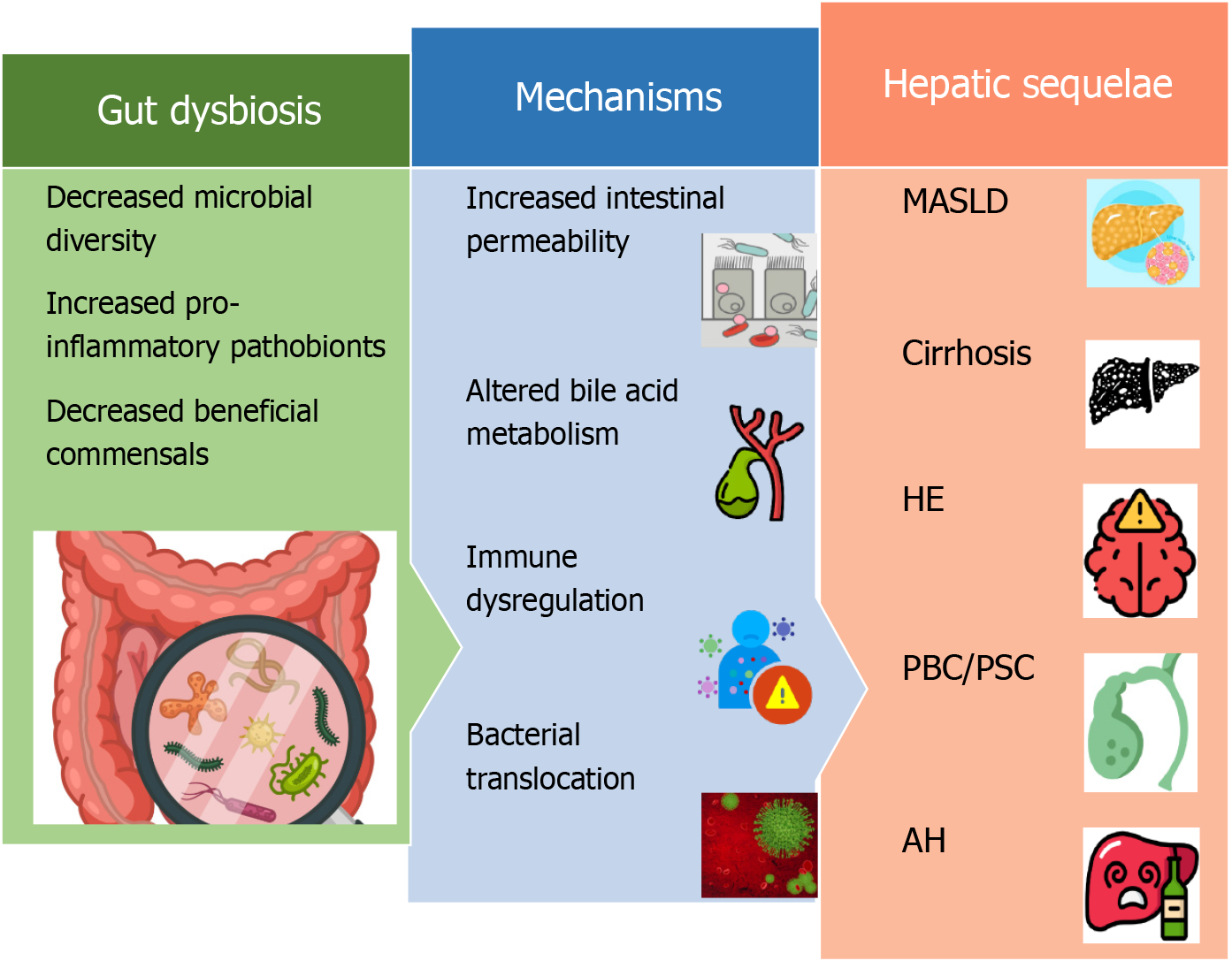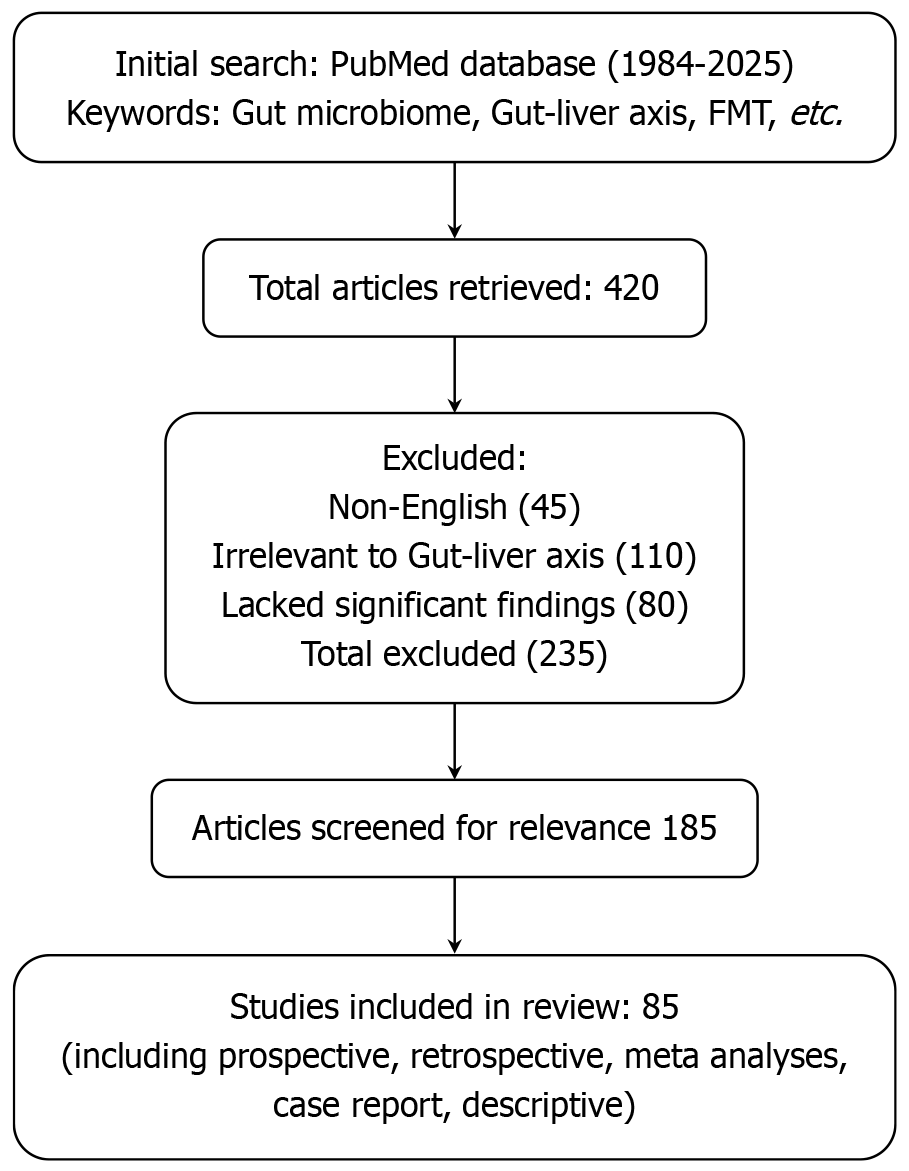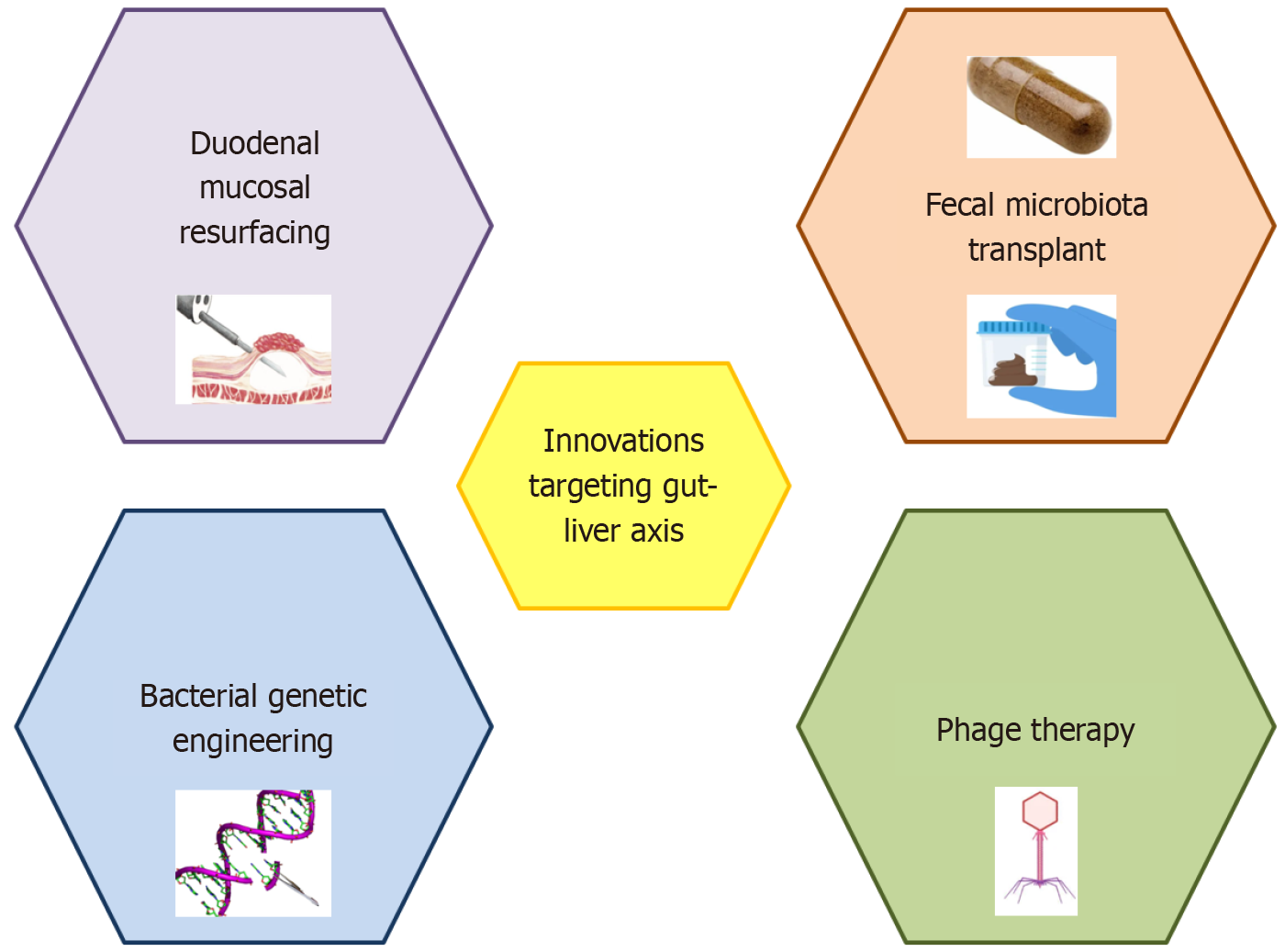Copyright
©The Author(s) 2025.
World J Gastroenterol. Oct 28, 2025; 31(40): 111409
Published online Oct 28, 2025. doi: 10.3748/wjg.v31.i40.111409
Published online Oct 28, 2025. doi: 10.3748/wjg.v31.i40.111409
Figure 1 Gut dysbiosis-driven mechanisms contributing to hepatic sequelae.
Disruption of the gut microbiota (dysbiosis) is characterized by decreased microbial diversity, loss of beneficial commensals, and expansion of pro-inflammatory pathobionts. This dysbiosis contributes to liver disease through increased intestinal permeability, altered bile acid metabolism, immune dysregulation, and bacterial translocation. These pathophysiological mechanisms are implicated in the development and progression of various liver conditions, including metabolic dysfunction-associated steatotic liver disease, cirrhosis, hepatic encephalopathy, primary biliary cholangitis, primary sclerosing cholangitis, and alcoholic hepatitis. MASLD: Metabolic dysfunction-associated steatotic liver disease; HE: Hepatic encephalopathy; PBC: Primary biliary cholangitis; PSC: Primary sclerosing cholangitis; AH: Alcoholic hepatitis.
Figure 2 Methodology.
A flow diagram outlining the literature search and study selection process for this review. A total of 420 articles were retrieved from the PubMed database using keywords related to the gut microbiome and gut-liver axis. After screening, 85 studies were included in the final review. FMT: Fecal microbiota transplantation.
Figure 3 Therapeutic strategies targeting the gut-liver axis.
A selection of innovative therapies designed to modulate the gut-liver axis.
- Citation: Anis MA, Shahid Y, Majeed AA, Abid S. Microbiome and gut-liver interactions: From mechanisms to therapies. World J Gastroenterol 2025; 31(40): 111409
- URL: https://www.wjgnet.com/1007-9327/full/v31/i40/111409.htm
- DOI: https://dx.doi.org/10.3748/wjg.v31.i40.111409















